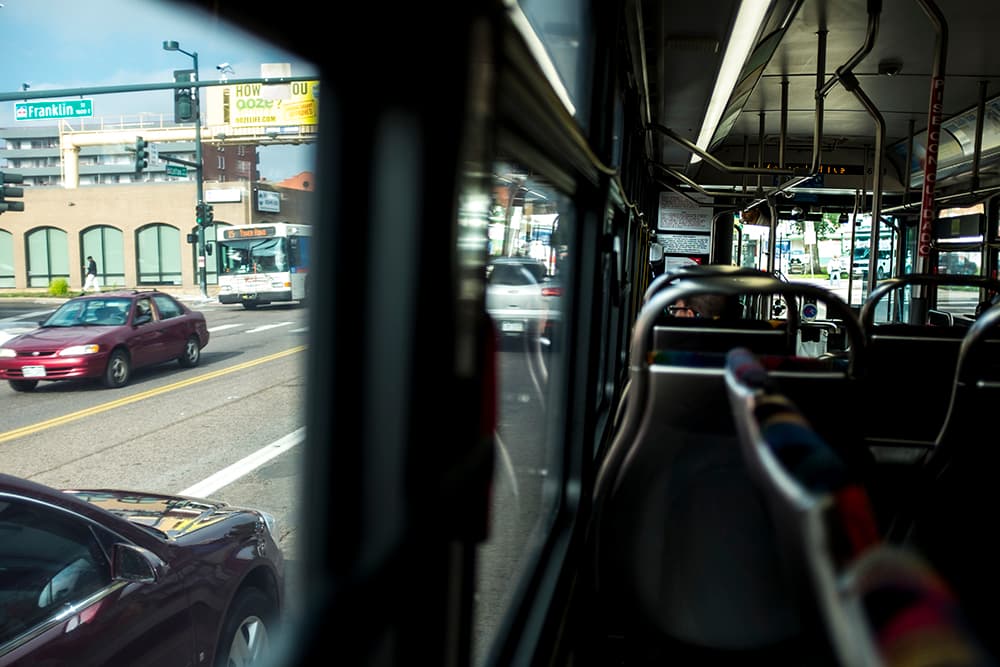
I rode the 15 a few times today.
There's nothing particularly interesting about that, except today it was a lot easier than the hundreds of other times I've done it.
Usually, I ride my bike around. I'm healthy and able-bodied, Denver's weather is nice, and it's usually faster than taking the bus. But for a few years, I relied solely on the buses. And now, when the temperature starts to drop below freezing, I start to feel more inclined to take the bus. When it snows, it's significantly safer for me to take the bus.
So I was pretty pleased when RTD launched its ticketing app on Nov. 1. Today — an unseasonably warm day on which I needed to go to the dentist and the office, where I'd left my bike over the weekend — I finally tried it out.
Mobile phone tickets are a game-changer for RTD.
Up until now, one of my biggest complaints about public transportation in Denver was that it was difficult to pay for.
The simplest way to pay is having a monthly or annual pass, but not everyone needs that. If you're riding a couple times a week or less, it doesn't make financial sense.
The next easiest option is to have a booklet of tickets, but to get that, you have to go to a major hub like Union Station. If your daily life doesn't bring you near one of those hubs, that's a pretty big inconvenience. It's especially inconvenient if you don't have a car, which if you're relying on public transit, maybe you don't.
Then you're left with the option of paying in cash. You need exact change, which for the bus is $2.60. It seems like a nice round number, but as someone who commuted by bus for several years, I can tell you that you almost never happen to have two dollar bills and just the right combination of coins. You have to be vigilant about the money you keep on you at all times -- or overpay.
So this is the main reason the RTD Tickets app just made my life 40 percent less irritating: All I need now is a smartphone and a credit card.
This morning, I downloaded the free app, entered my credit card info and bought myself a ticket good for local travel until 3 a.m. It cost $5.20. It was ready for me as soon as I hit "activate."
Here's what that looks like:
That date and time stamp up top bounces around its box, so you can't use a screenshot of someone else's pass. There's nothing on the buses that scans it — you just show the driver.
Note: When I first wrote this, I did not include the fact that you can buy an RTD ticket booklet at the grocery store, which I don’t find any more convenient than going to Union or Civic Center stations, especially on the fly. I also left out the MyRide card, which had the same hurdles to access initially and then requires more management than the app.
My idea of convenience in public transportation is that it’s easy to use for everyone, not just commuters who know they're going to use it to get to the same point B from the same point A every day at the same times. It should be easy for sporadic users, people who need it for unpredictable reasons at unpredictable times and, really, drunk users.
The app's second best feature: the trip planner.
Another cumbersome aspect of traveling with RTD was figuring out how to get from point A to point B, and how to do it as quickly and simply as possible.
Up until now, the easiest thing to do was to let Google maps tell you the best route. That's usually what I did, but I often found its knowledge of the bus schedules unreliable. The other option was to comb through schedules and line up the transfers yourself, a process that could take a good 10 minutes on the RTD website (and woe is the person who has to do that on mobile).
Now, I've got the reliability of the information coming directly from RTD and the ease of a computer figuring it out for me.
When you edit your travel preferences, you can ask it to show you the best trip, the route with the fewest transfers or the route with the least walking. You can also select "Walk + Transit," "Bike + Transit" or "Car + Park-n-Ride + Transit," and tell it what time you'd like to leave or what time you'd like to arrive.
With all your settings in, it'll spit out a handful of options and tell you how long each trip will take, the number of transfers and the route. Once you select one, it'll show you a route in a clear way that includes a Google map.
RTD Tickets also includes a "Next Ride" feature that lets you look up schedules.
It's hard to quantify the time RTD Tickets can save, but it feels significant.
When I think back to the number of times I walked to a 7-Eleven to buy a pack of gum just so I could get cash back and request the right change to get me on a bus... I don't know, it just seems ridiculous. And I can't even tell you how many times I've paid for a bus in nothing but dimes and nickles that I fished out of a change jar and carefully counted out on my kitchen table.
Traveling Denver by bus is still fairly slow, but two frustrating parts of the trip just got a lot easier.













